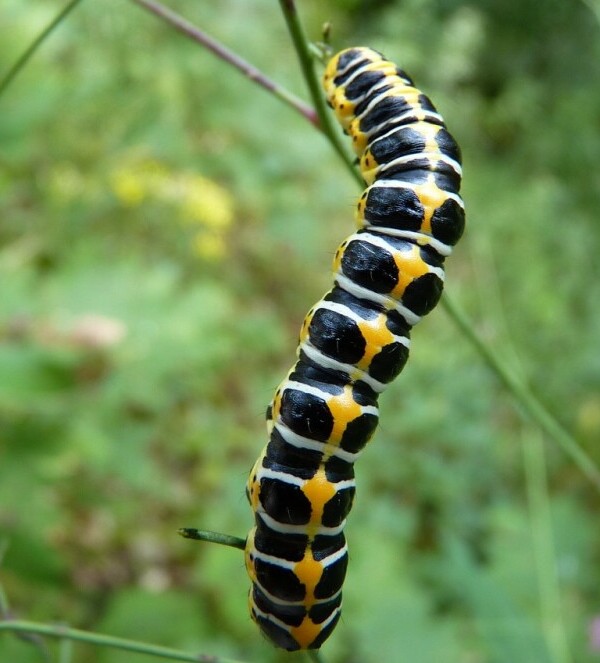Urban Living Gardening Tips For Small Spaces
 Think of vertical space as the final frontier in your urban gardening adventure. With limited ground area, you’re going to find out how to turn your gaze upward. If you’re feeling hemmed in by the confines of city living, hopefully, this article will help you tap into the potential of walls, balconies, patios, and even window frames to create a lush, layered garden.
Think of vertical space as the final frontier in your urban gardening adventure. With limited ground area, you’re going to find out how to turn your gaze upward. If you’re feeling hemmed in by the confines of city living, hopefully, this article will help you tap into the potential of walls, balconies, patios, and even window frames to create a lush, layered garden.
Choosing the right containers and structures is crucial. Favor using lightweight materials and securely mounted planters to ensure safety and manageability. Your choices include hanging baskets, wall-mounted planters, or even repurposed items like shoe organizers. Focus on using what you’ve got to create something beautiful and bountiful.
Sunlight is the golden ticket for plant growth. I’m going to show you how to assess the sun’s path across your space and position your plants to soak up those rays. Depending on the orientation of your windows or balcony, we’ll determine the best types of plants that thrive in your unique urban environment.
As you get your vertical garden set up, you’re ready to tackle the next challenge: sustainable pest management. So, let’s explore how you can keep those pesky intruders at bay in an eco-friendly way.
Here’s a little transparency: Our website contains affiliate links. This means if you click and make a purchase, we may receive a small commission. Don’t worry, there’s no extra cost to you. It’s a simple way you can support our mission to bring you quality content.”
Embracing Sustainable Practices: Pesticide-Free Pest Control
 I’m going to walk you through some eco-friendly tactics for keeping your small-space garden pest-free without reaching for harsh chemicals. That’s going to include tips for introducing and encouraging beneficial insects to take up residence, something essential for battling unwelcome critters.
I’m going to walk you through some eco-friendly tactics for keeping your small-space garden pest-free without reaching for harsh chemicals. That’s going to include tips for introducing and encouraging beneficial insects to take up residence, something essential for battling unwelcome critters.
You can create simple, natural repellents from everyday ingredients found in your kitchen. Have you ever wondered if something as common as garlic could keep pests at bay? Guess what? It can. A garlic spray solution is just one of the DIY options that’s effective yet harmless to the environment.
Keeping your plants robust is another critical step in preventing pest outbreaks. Healthy plants are less susceptible to infestation and diseases. I’ll share how to ensure your plant buddies stay in tip-top shape.
Now, have you heard of companion planting? It’s not just about saving space; it’s also about natural pest control. Marigolds, for example, emit a scent that deters certain pests, making them a fantastic neighbor for your veggies. I’ll explain how strategic plant partnerships can offer a strong line of defense.
Thriving in Tight Quarters: Selecting Hardy Plants for Urban Gardens
If you’re hoping to make the most out of your limited urban space, focusing on hardy plants that thrive in compact areas is key. Let’s be real, no one wants to labor over a plant that demands six feet of space or full rural sun.
Now, veggies like cherry tomatoes, leafy greens, and herbs tend to love the urban jungle. With herbs, you not only get fresh flavor boosters for your kitchen (think basil, mint, cilantro), but their aroma can be a natural deterrent to pests!
Flowers aren’t just pretty faces; they’re the heavy lifters of any garden. Aim for varieties like marigolds or lavender which are not only beautiful, but they work overtime in keeping unwanted insects at bay while attracting pollinators.
It’s important to understand the difference between perennials and annuals. Perennials come back every year, saving you money and time, while annuals allow you to experiment with new plants each season.
Transitioning smoothly, your flourishing urban garden need not drain your wallet. This brings us to the next crucial piece: growing green both in color and cash. That’s what’s up next.
Cost-Effective Urban Gardening: Growing Green without Breaking the Bank
I’m going to walk you through some smart, money-saving strategies that’ll make your gardening adventures as cost-efficient as they are enjoyable. You’ve seen how to maximize space and keep pests at bay naturally—now it’s time to help your garden flourish without the financial strain.
Think of your home as a treasure trove for gardening supplies. You can repurpose yogurt containers, coffee cans, and even old boots as quirky, character-filled planters. Instead of buying new, choose to rejuvenate and give a second life to items that might otherwise be wasted.
Composting isn’t just environmentally savvy; it’s also a fantastic way to reduce the need for store-bought soil amendments. Start with kitchen scraps, yard waste, and even shredded newspaper. Remember, your plants love the richness of homemade compost—it’s like a gourmet meal for them.
If you want to go one step further in saving water—and hence money—collect rainwater in barrels. Using a watering can instead of a hose also controls the amount of water you use, ensuring every drop counts. Plus, grouping plants with similar watering needs together saves time and resources.

Lastly, tap into the power of community. From seed exchanges to tool lending libraries, there’s a wealth of community resources waiting to be explored. You can also network with fellow, green-thumbed neighbors to share cuttings, experience, and advice.
Choose something that resonates with you, whether it’s upcycling creatively, perfecting the art of composting, or forming community connections. There are endless possibilities to grow your very own urban oasis sustainably and economically. So, take this advice, roll up your sleeves, and let the urban gardening adventure begin!


Hi there,
I found your article fascinating; thank you for sharing it. I live in an urban area and always wanted to start my own garden. Thanks to the useful tips you have shared, I’ll be able to begin my gardening adventure. I do have a question if you don’t mind.
How do you prioritize between aesthetics and functionality when selecting plants and designing the layout of a vertical garden in urban spaces?
Thank you again!
This item should take place when you plan your garden. As for myself, I always plan around the vegetables I will be planting. Because I do have a decent amount of yard space, I employ what is as square foot gardening. Here is the link if you want to read the book: https://amzn.to/3ICOI0t